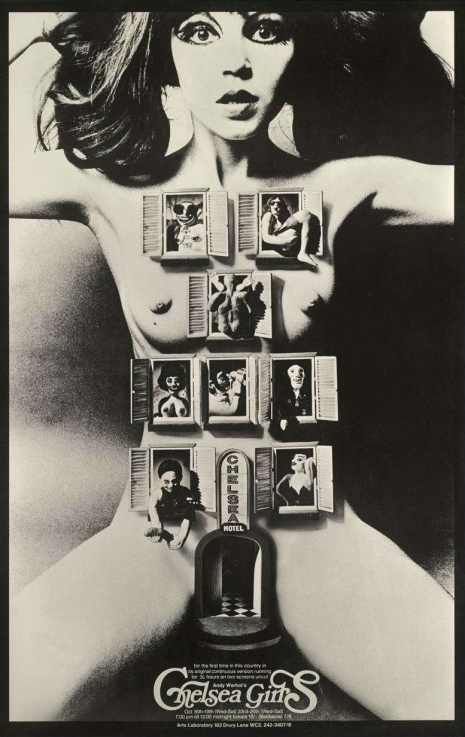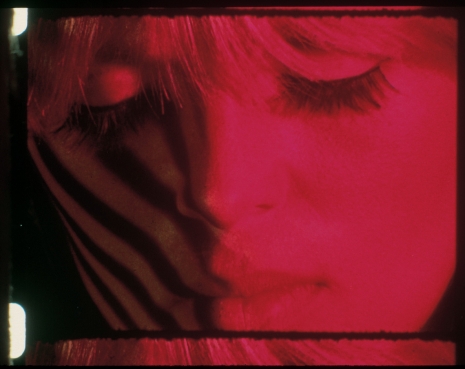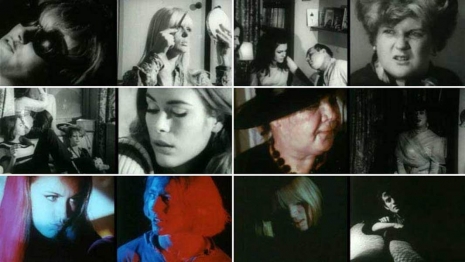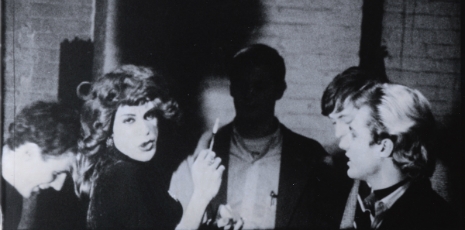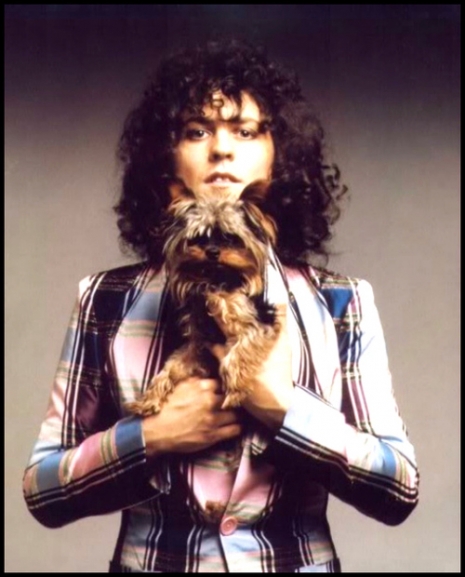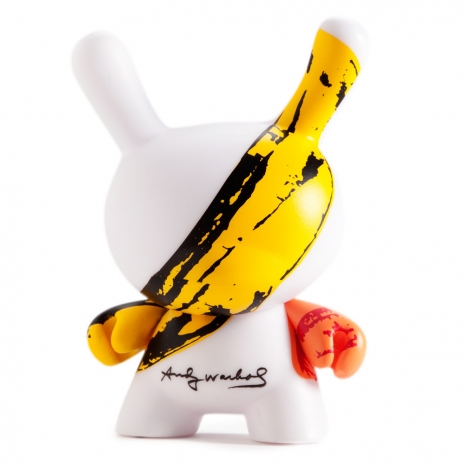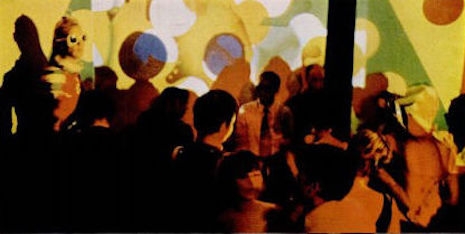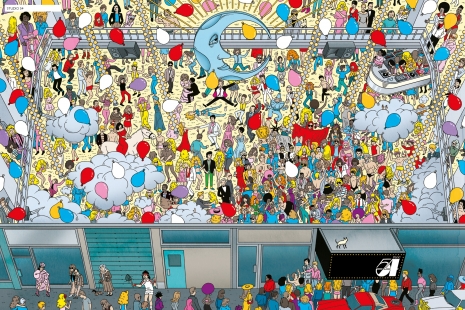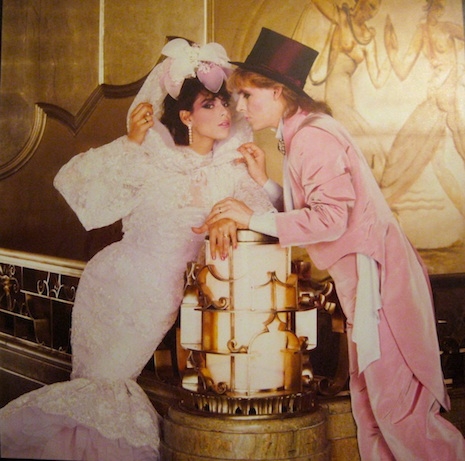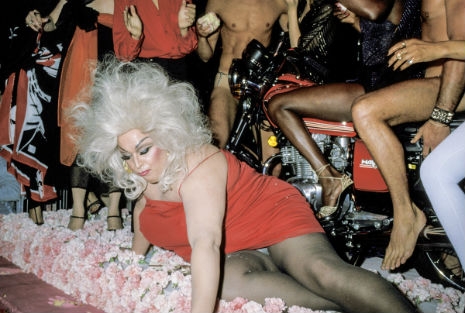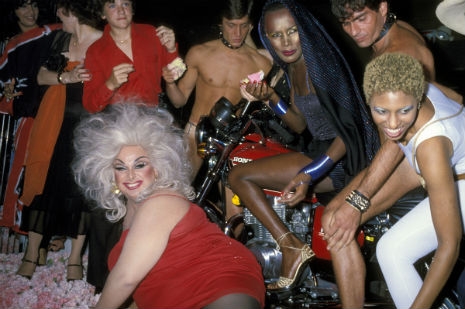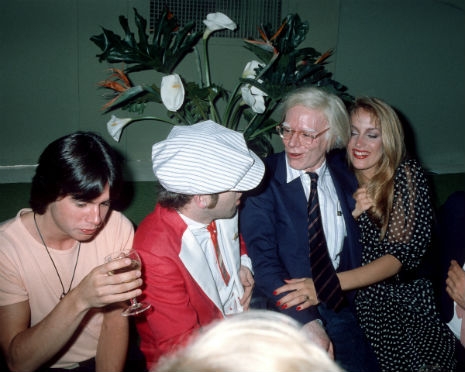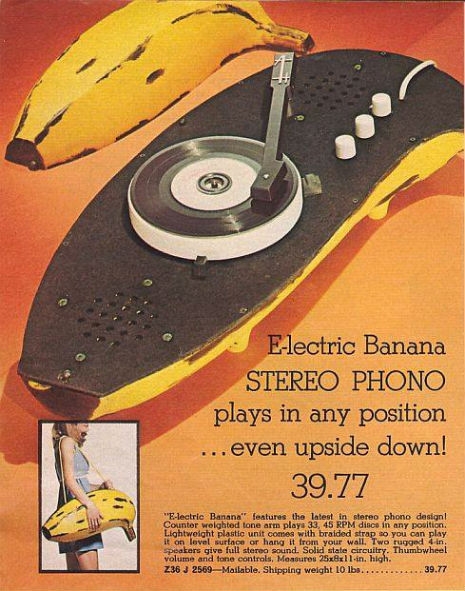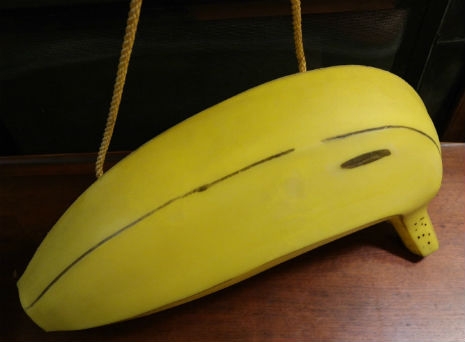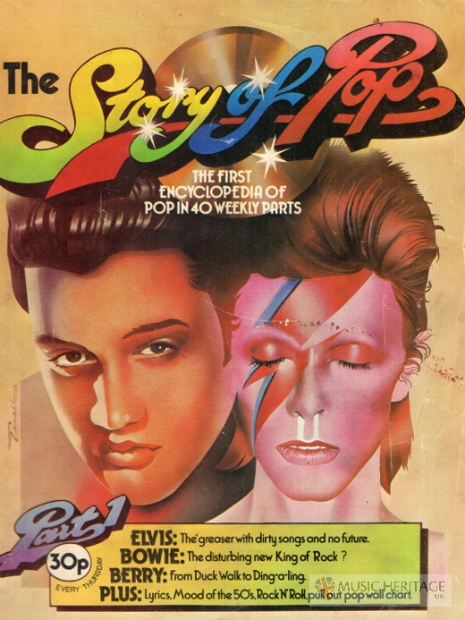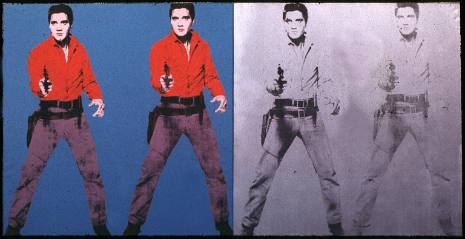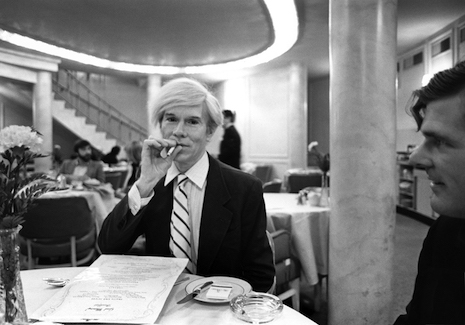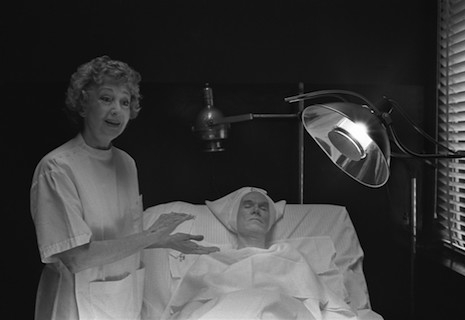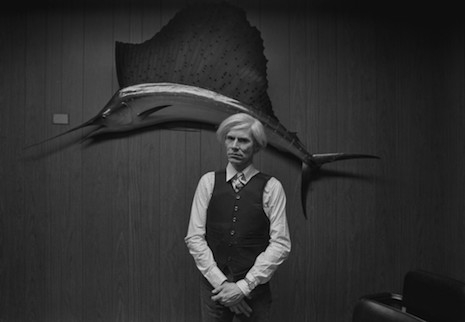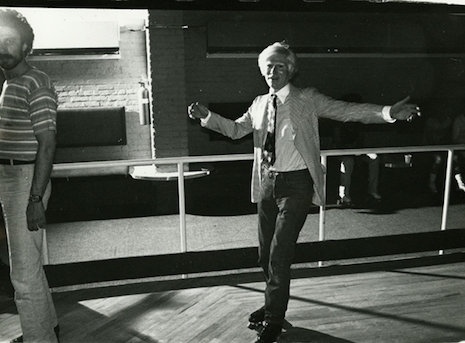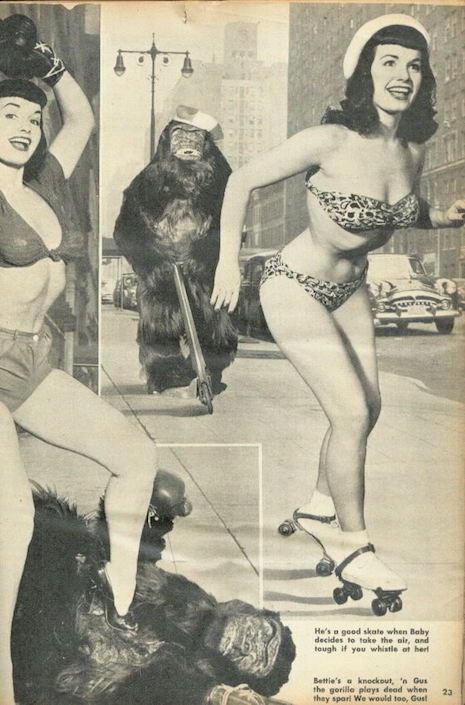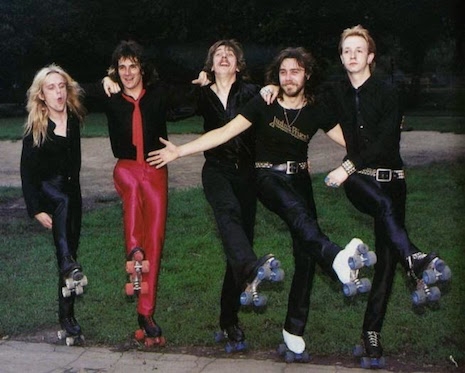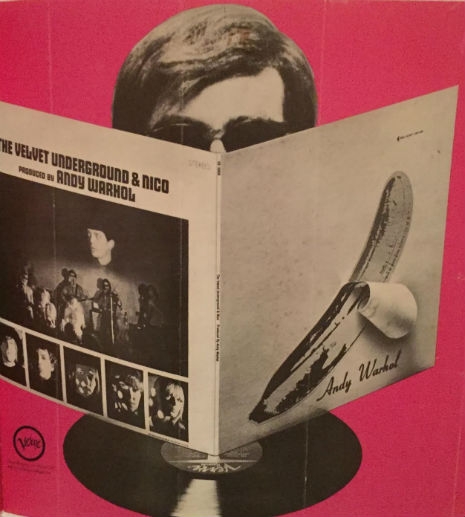
It was fifty years ago this week that the future began with the Velvet Underground, Andy Warhol, and his banana. The destruction and rebuilding of rock ‘n’ roll music as it then existed commenced. This was all taking place even though only a few people knew about it at the time. The right few, as always. I have to think that anyone reading this knows the history of the Velvet Underground so I’m not going to rehash it here.
In the thirty years since Warhol’s death, the human race has bought and sold more “Andy” than Andy himself could possibly have dreamed of and more. Much more. Too much even. Year after year there are more Warhol books, toys, giant banana pillows, clothing lines, shoes, Andy Warhol glasses, movies, action figures (or maybe inaction figures, this being Warhol), pencils, notebooks, skateboards—literally everything ever! There’s been more most post mortem Warhol merchandising than for practically anyone or anything you can name. Even more than for Elvis, Marilyn or James Dean who had head starts.
Warhol and his entourage were infamous speedfreaks—speedfreaks with cameras, tape recorders, and movie gear who talked a lot and didn’t sleep much—and his every utterance was recorded, long before museums, historical posterity and millions of dollars were the reasons.
With the advent of the Warhol Museum, Andy’s every movement, thought, and influence has been discussed, dissected, filed and defiled ad nauseum. Every single piece of art he ever did can be traced back to an original page in a newspaper, an ad in the back of a dirty magazine, a photograph, a Sunday comic, or an item from a supermarket shelf and they’ve ALL been identified and cataloged.
Except for one.
Just one.
Probably the second most popular of Warhol’s images, standing in line right behind the Campbell’s soup can, is the banana image found on the cover of the first Velvet Underground album. Thee banana! But where did it come from? Everything else was appropriated from somewhere. What about this one?
I KNOW where it came from and I have known for around thirty years. Oddly enough it only just now occurred to me (when I looked up Warhol’s death date) that I found this thing, which I am about to describe, mere weeks before Andy’s untimely demise.

I grew up in the sixties and I’ve loved the Velvet Underground since even before the advent of punk. And I love Andy Warhol, too. Just look at my Facebook profile photo. I have shelves of books on Warhol and all things Velvets and have amassed quite a collection of Warhol and Velvets rarities. My favorite book of all time is Andy Warhol’s Index from 1966, a children’s pop-up book filled with drag queens, the Velvets, 3-D soup cans and even a Flexi disc record with Lou Reed’s face on it with a recording of the Velvet Underground listening to a test pressing of their first LP. The one with the BANANA.

The author’s Facebook profile pic. Duh.
Andy Warhol’s number one right-hand man in the sixties and the person who turned the Factory silver (among many many other things including being the primary photographer of the Factory’s “silver years”) was Billy Name (Linich). An online comment described him this way:
You can’t get more inside than Billy Name in Warhol’s Factory world. In fact he lived in the Factory - and to be more specific he lived in the bathroom at the Factory - and to be even more specific he stayed in the locked bathroom without coming out for months (years?).
And so to quote this definitive “insider” Billy Name on the history of the banana:
...bananas had been a Warhol theme earlier in the Mario Montez feature film Harlot mostly as a comedic phallic symbol. In the general hip culture, Donovan’s “Mellow Yellow” was going on [mellow yellow; roast banana peels in an oven, and then roll and smoke them]. The high was called “mello yellow.”
The specific banana image Andy chose came from I know not where; it’s not a Chiquita banana or Dole fruit company, because Andy’s banana has ‘overripe’ markings on it, and the fruit companies use whole yellow bananas on their stickers. Anyway, Andy first used this particular banana image for a series of silk-screen prints which he screened on white, opaque, flexible, Plexiglass (sort of like 2 feet x 5 feet). First an image of the inner banana “meat” was screened on the Plexi in pink, and then covered by the outer skin screened on and cut out of a glossy yellow sticky-back roll of heavy commercial paper (ordered from some supply warehouse). Thereby each banana could be peeled and the meat exposed and the skin could be replaced a number of times, ‘til the sticky stuff wore out. Naturally this was intentionally erotic Warhol-type art.
When thinking of a cover for the first Velvets album, it was easy for Andy to put one of his own works on the cover, knowing it was hip, outrageous, and original and would be “really great.” Andy always went the easy way, using what he had, rather than puzzling and mulling over some design elements and graphics for cover art that don’t really work. His art was already there, hip, erotic, and cool. The Plexi silk screen art definitely came first, in 1966. The album came out in ‘67. I do not recall any other design being thought of or even considered. The back of the album cover was a pastiche amalgam of photos from Andy’s films, Steven Shore, Paul Morrissey and myself and was messy and mulled over too much.
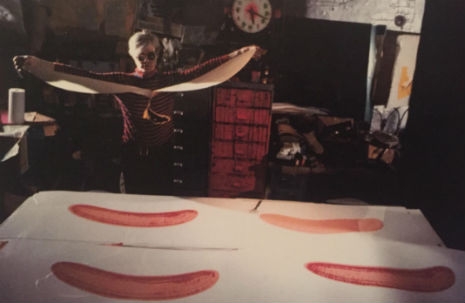
So here we are on the fiftieth anniversary of The Velvet Underground & Nico and its mysterious banana cover art, and I felt that I have held this secret for way too long. I always wanted to use this in a book or something but it never happened.
This thing was hanging on my kitchen wall for three decades, in New York and LA and is now in secured storage for reasons which are about to become obvious. This is how I found it: One day in the mid 80s I was cruising around the Lower East Side aimlessly—as I had done most of my life up to that point—running into friends, looking at stuff people were selling on the street, stopping into Manic Panic, Venus Records, St. Marks Books, and any junk shops that caught my eye. There was one on Broadway that I had never seen before right down the street from Forbidden Planet and the greatest place ever, the mighty Strand Book Store. I went in and there was a lot of great stuff for me. I found some old records, a huge stash of outrageous and disgusting tabloid newspapers from the sixties which I kept buying there for a couple months afterward, and some cool old knick-knacks. I knocked into something on a crowded table full of junk and heard a big CLANG on the cement floor. I bent down to pick it up. It was one of those cheap triangular tin ashtrays that usually advertised car tires or something mundane. I picked it up (it was face down) and when I turned it over I was surprised to see…THE BANANA!!
It was an ad for bananas printed on a cheap metal ashtray.
Don’t you like a banana? ENJOY BANANA. Presented by WING CORP. designed by LEO KONO production”
I thought wow, this is cool! But over time I realized that I had quite literally stumbled across a true missing link. I figured I’d use it for something big one day, but I never did. UNTIL NOW. Ladies and germs, Andy Warhol and Velvet Underground fans and scholars, without further ado I bring you THE MISSING LINK! A true Dangerous Minds mega exclusive! (As Jeb Bush would say “Please clap.”).
A primitive, pounding Moe Tucker drumroll please for the reveal of THEE BANANA…after the jump







